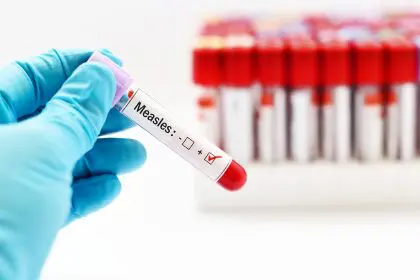Ever wonder why some people seem to catch every stomach bug going around while others rarely fall ill? The answer might lie in your blood type and genetic code. Recent research reveals fascinating connections between these biological factors and your susceptibility to norovirus, commonly known as stomach flu.
A surge in cases raises concerns
The Centers for Disease Control and Prevention (CDC) reports an alarming increase in norovirus outbreaks across the United States. During one week in December alone, health officials documented 91 suspected or confirmed outbreaks, marking a significant spike compared to previous years. This surge has prompted renewed interest in understanding why some individuals appear more vulnerable than others.
Understanding the perfect pathogen
Norovirus has earned its reputation as “the perfect pathogen” due to its remarkable ability to spread and persist. The virus demonstrates exceptional resilience, surviving on surfaces for months and resisting many common disinfectants. Its ability to spread through multiple routes, including contaminated surfaces and food, makes it particularly challenging to control.
The blood type connection
Research has uncovered a compelling link between blood type and norovirus susceptibility. Type O blood, present in approximately 43% of Americans, appears to create more favorable conditions for norovirus infection. This increased vulnerability stems from specific receptors in the gastrointestinal tract that make it easier for the virus to establish infection.
Genetic protection revealed
Beyond blood type, scientists have identified a genetic factor that might offer protection against norovirus. The FUT2 gene mutation, present in 15-20% of the population, creates what researchers call “non-secretors.” These individuals typically show increased resistance to norovirus infection due to their body’s unique molecular composition.
The science of infection
When norovirus enters the body, it seeks specific molecules to attach to and begin infection. The presence or absence of these molecules, determined by both blood type and genetic factors, can significantly influence whether exposure leads to illness. This explains why two people exposed to the same virus might experience different outcomes.
Understanding transmission risks
The virus spreads with remarkable efficiency through multiple routes. Contaminated surfaces, food, and direct contact with infected individuals all pose risks. The virus’s ability to become airborne during episodes of projectile vomiting creates additional transmission opportunities, making containment particularly challenging.
Prevention strategies that work
While biological factors influence susceptibility, practical prevention measures remain crucial. Thorough hand washing with warm water and soap for at least 20 seconds provides significant protection. Using chlorine-based disinfectants on surfaces and maintaining distance from infected individuals also helps reduce transmission risks.
Recognizing symptoms early
Early recognition of norovirus symptoms enables prompt isolation and reduces transmission risks. Common signs include sudden onset of vomiting, diarrhea, and stomach cramps. Understanding your personal risk factors can help you respond more quickly when symptoms appear.
Managing infection effectively
For those who contract norovirus, proper management focuses on preventing dehydration and supporting natural recovery. While the body works to clear the infection, maintaining adequate fluid intake becomes crucial. Severe symptoms or signs of dehydration warrant immediate medical attention.
The role of immune response
Individual immune system responses also influence how severely someone experiences norovirus infection. Previous exposure and overall health status can affect both susceptibility and symptom severity. Understanding these factors helps explain why experiences with the virus vary significantly among individuals.
Environmental considerations
The virus’s ability to survive in various environments influences transmission risks. Cold, moist conditions particularly favor virus survival, explaining seasonal patterns in infection rates. This understanding helps inform more effective prevention strategies.
Future implications
Ongoing research into genetic and blood type influences on norovirus susceptibility may lead to more targeted prevention strategies. Scientists continue exploring how these biological factors might inform the development of treatments and vaccines.
Public health impact
Understanding individual susceptibility factors helps public health officials better predict and respond to outbreaks. This knowledge influences recommendations for high-risk individuals and facilities where outbreaks commonly occur.
The complex interaction between blood type, genetics, and norovirus susceptibility highlights the importance of personalized prevention strategies. While some biological factors lie beyond our control, understanding our individual risk levels enables more effective protection against this highly contagious virus. As research continues to unveil new insights, our ability to prevent and manage norovirus infections continues to improve.
















